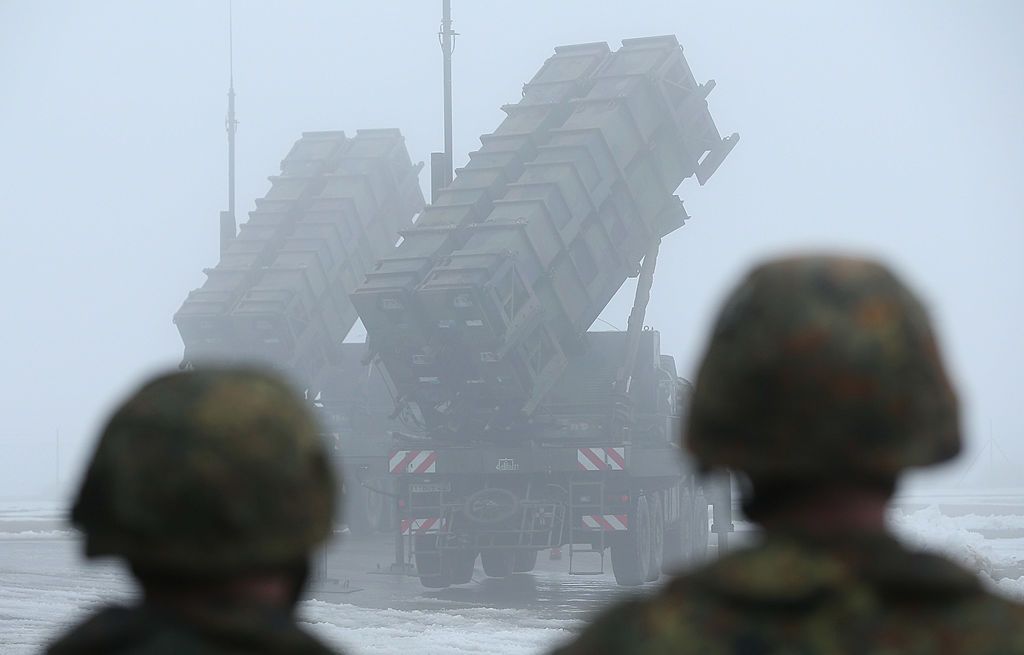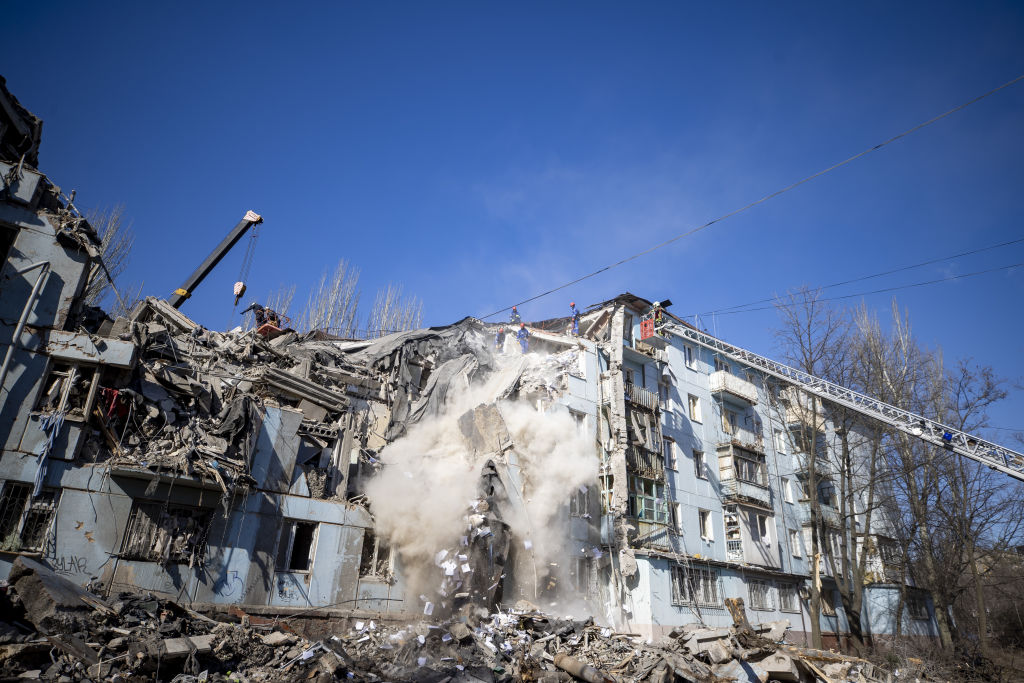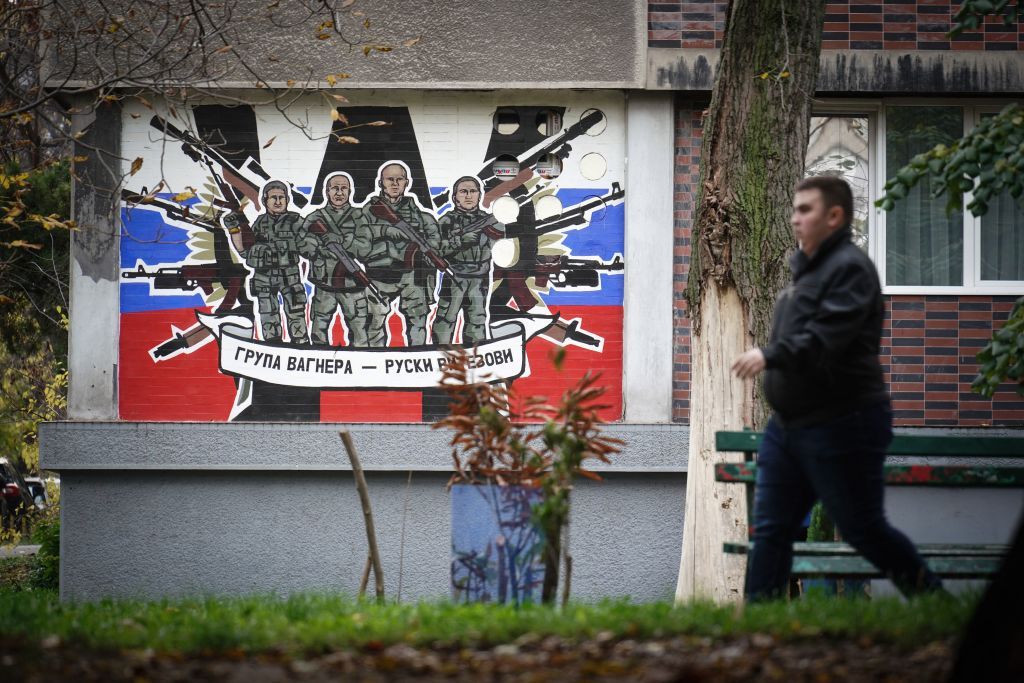Shortage of air defense missiles endangers Ukraine’s ability to fight off Russian attacks

Over last winter, Ukraine successfully withstood Russia’s months-long campaign targeting energy infrastructure with barrages of missiles and drones.
But that achievement came with a cost.
Having shot down hundreds of Russian rockets and kamikaze drones since October, Ukraine’s Air Force is now facing a shortage of missiles for its air defense systems.
Citing the February assessment in the leaked Pentagon papers, the New York Times reported that the stockpiles of missiles for Ukraine’s main air defense systems, the S-300 and Buk, were expected to be “completely depleted” by early May.
Since the beginning of the full-scale invasion in February 2022 Ukraine has received some Western air defense systems, such as IRIS-T, NASAMS, Crotale, Gepard, and most recently, the advanced U.S. built MIM-104 Patriot. Nonetheless, the Soviet-designed S-300 and Buk systems still account for most of its air protection.
Strengthening Ukraine’s air defense, specifically ground-based systems, was the main task of the recent meeting of the Ukraine Defense Contact Group held on April 21 at the Ramstein Air Base in Germany.
However, NATO members’ capabilities when it comes to supplying missiles for Soviet systems are limited and finite, as the interceptors are only produced inside Russia.
As Kyiv and its partners are dealing with the issue, Russia is reportedly already taking advantage of Ukraine’s shortage by sending more aircraft to attack its front-line positions.
Supplies and maintenance
Ukraine’s Air Force had a “large” stock of missiles for S-300 and Buk air defense systems before Russia’s full-scale invasion, said Air Force spokesperson Yurii Ihnat, without going into specifics.
“The most effective thing today to shoot down all the aerial targets the Russians are launching at us is the anti-aircraft missile systems, namely the Buk and S-300. They are the ones that do the job that we see in the reports of the General Staff,” Ihnat told the Kyiv Independent.
Ihnat admitted that the air defense missile shortage issue was acute now, after a season of Russian mass attacks.
On top of the missile shortage, the maintenance of these systems is also a problem. The Ukrainian military has been using these systems since 2014, when Russia first invaded Ukraine, so many of them need new components and complex repairs.
The producer of S-300 and Buk, as well as their modifications, is Russian state-owned company Almaz-Antey.
“We have companies that can make repairs to extend the life of the equipment, but the production of this equipment, and not only the equipment but also critical spare parts for it, is exclusively Russian,” says Ihnat.
“To produce unique spare parts is impossible under our conditions. Nor is it possible to manufacture missiles.”
In the case of the S-300 systems, Ukraine may count on help from some NATO countries that have components and ammunition for them in their arsenal.
Slovakia has already transferred one S-300, as well as missiles and spare parts for it.
The complex is also in service in Bulgaria. Though Ukraine has reportedly asked the Bulgarian government for supplies of a wide range of weapons including the S-300, Sofia has so far refused to provide the systems, citing the need to protect its own sky.
Greece has also refused to give Ukraine S-300, with Prime Minister Kyriakos Mitsotakis saying in February that it would create “a gap” in the country’s defense capabilities without appropriate replacements.
However, Ihnat says that some countries that give Ukraine components and missiles for S-300 do not publicize the cooperation.
The situation with the Buk systems is no less problematic for Ukraine, as the Soviet-designed complex is not officially in active service with any NATO country.
In September 2022, defense analysis website Oryx wrote that Finland, which recently joined NATO, holds Buk systems in reserve. According to Oryx, they were decommissioned in 2010. At the moment, there is no information on whether these systems or their components have been transferred to Ukraine.
However, Ukraine has begun receiving RIM-7 Sea Sparrow missiles from the United States, which could replace its expiring Soviet and Russian rockets for Buk, according to Politico.
Citing unnamed sources familiar with the matter, the publication reported in January that “the Ukrainian military has managed to tweak its existing Soviet-era Buk launchers to fire the Sea Sparrow.”
This missile is in service with a dozen Western countries, which have significant stocks of this model. But it is yet unclear how many Buk systems Ukraine was able to modify and how many Sea Sparrows the West could have supplied.
New challenges
Ukraine is not the only side dealing with a missile shortage.
After Russian forces have subjected Ukraine to multiple massive missile attacks over the past year, its stores emptied to the point of “emergency ration,” says Ihnat.
According to Andrii Cherniak, representative of the Defense Ministry's Main Intelligence Directorate, the Russian Air Force spends far more missiles than it is capable of producing. He claims that Russia has only 20% of its total stockpile of high-precision cruise missiles left.
“Now they can produce 30 to 60 modern high-precision missiles a month. Given the fact that the world sanctions are in effect – they are not buying the electronics they need for these missiles. They are trying to bypass them (the sanctions), by smuggling. This production, according to military intelligence, will not continue for a long time,” Cherniak said.
As Moscow’s high-precision missile stocks run low, Russia remains able to terrorize Ukrainian cities with their own S-300/400 stocks, repurposed from their air defense function to attack ground targets. Ukraine's intelligence estimates that Russia has “thousands” of missiles for the S-300/400 systems. Their key difference compared to other missiles is poor accuracy.
The shortage of high-precision missiles has forced Russia to be flexible about the types of weapons used to strike at Ukraine.
“They are using cheaper weapons such as guided air bombs equipped with wings and GPS systems,” Ihnat said.
Since late winter, the Russian Air Force has been actively using cheap and easy-to-produce Soviet and Russian guided aerial bombs, which Russia had previously used in Syria. Russia also has several other types of gliding bombs, weighing between 500 and 1,500 kilograms.
The principle of their operation is similar to that of the U.S. Joint Direct Attack Munition, or JDAM: the carrier at high speed and height drops a bomb, which then is headed to hit the target. The range of the munition varies depending on the altitude and speed of the carrier.
The use of precision-guided munitions has allowed Russian pilots to drop them outside the range of Ukrainian air defense systems.
“In order for them to use the weapon at a range of 50-60 km, they need to approach at an altitude of 10,000 meters and make a launch. It (the plane) gets on course and carries out the launch without entering our (air defense) zone,” said Oleksandr, commander of an S-300 anti-aircraft missile battery. The Kyiv Independent is not revealing the soldier’s last name or the exact location of his deployment due to security concerns.
Ukraine’s Air Force warned in early April that Russian airstrikes, previously kept at bay by Ukraine’s air defense, have been increasing.
Unnamed Ukrainian soldiers told The Times in late April that Russian troops have recently started to send more helicopters and aircraft to attack their positions.
According to Oleksandr, aside from gliding bombs, Russian forces are also actively using drones at the moment.
With a shortage of missiles for its main air defense systems, S-300 and Buk, Ukraine still has to sometimes use them for cheap targets such as Iranian-produced Shahed-136 kamikaze drones. Ukraine's Air Force has also already used expensive Western systems to shoot down drones, according to Ihnat.
According to the Air&Space Forces magazine, the cost of one S-300 missile is estimated at up to $1 million. At the same time, the cost of one Shahed-136 drone is estimated to be between $30,000-50,000.
“They (Russians) have now moved away from the tactics of massive missile strikes. They're using drones more now, they're cheaper,” Oleksandr said, adding that the military is “wasting these precious missiles that could have been spent on something more valuable.”
“This problem is growing and it will grow. And the further it goes, the more acute it will become,” he added. “We still have some (missiles), but everyone understands that the supply is not endless. We have to move on, look for new ways.”














